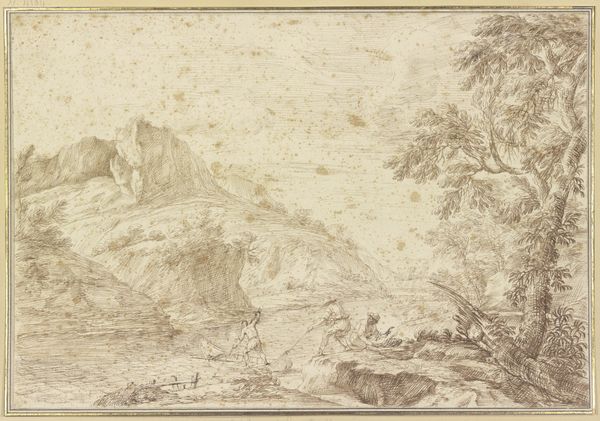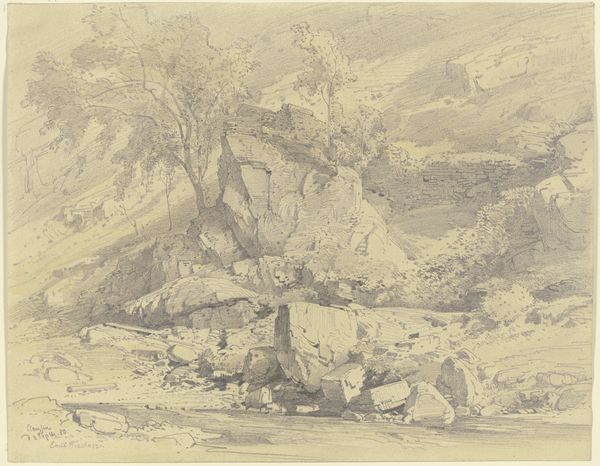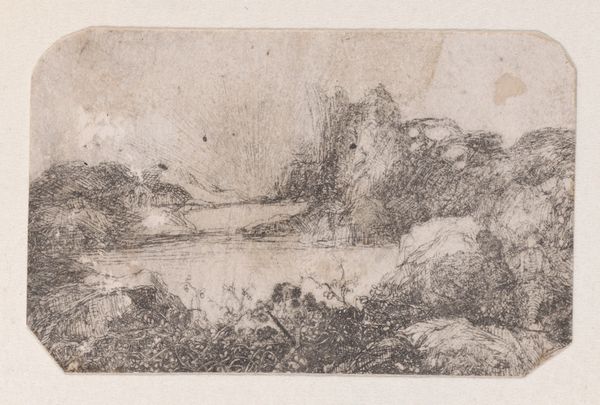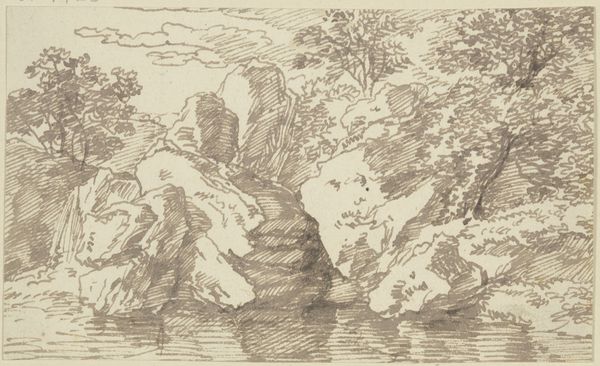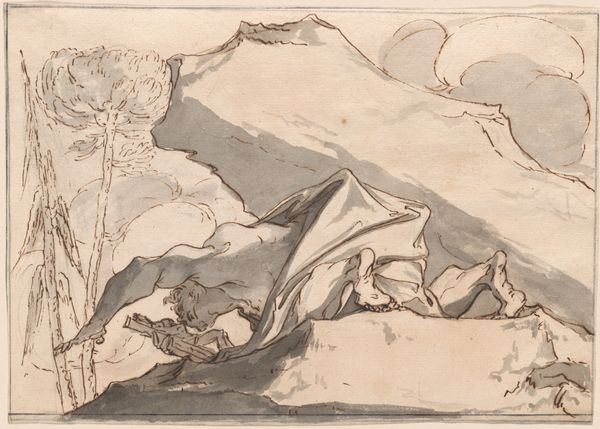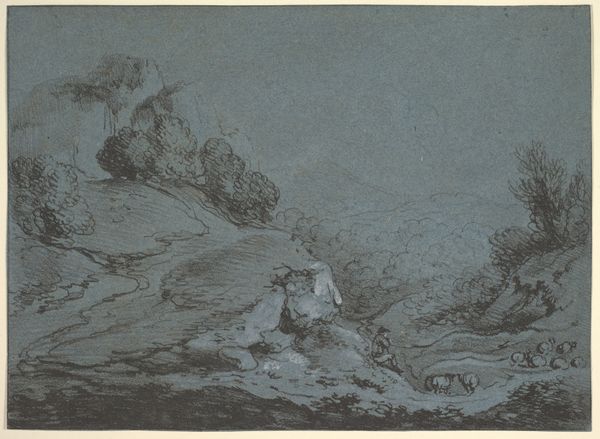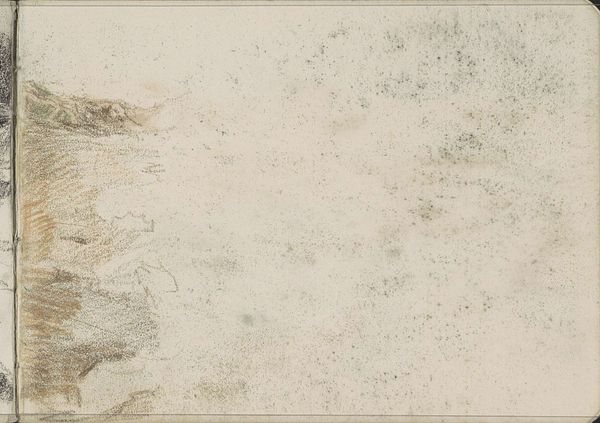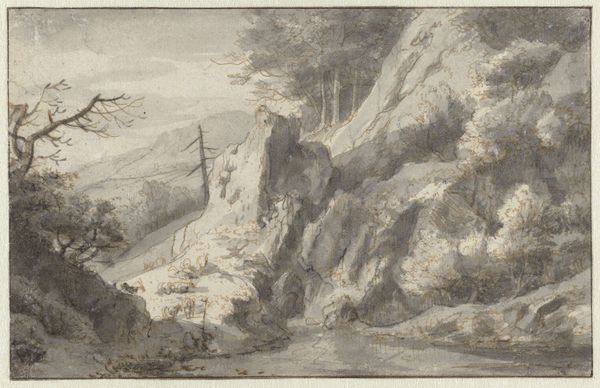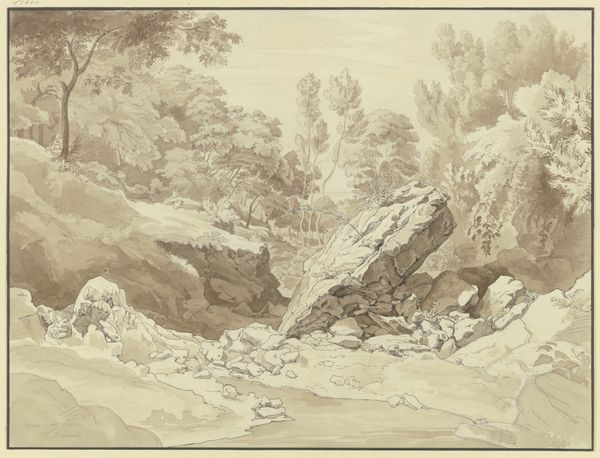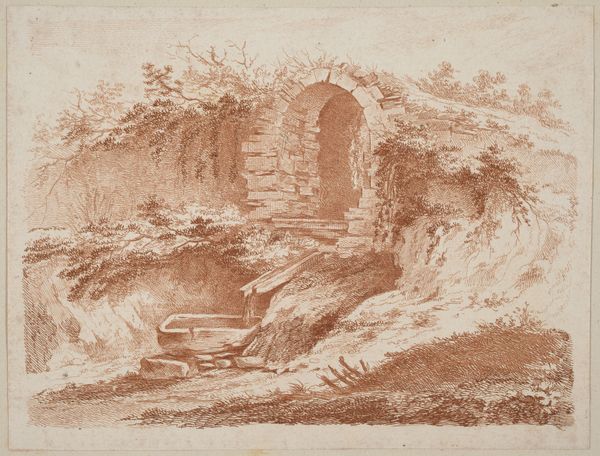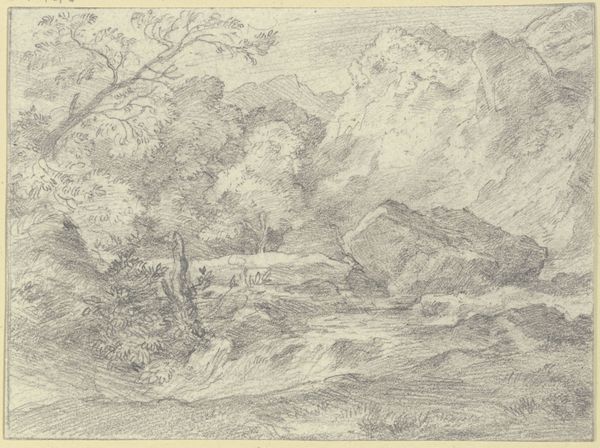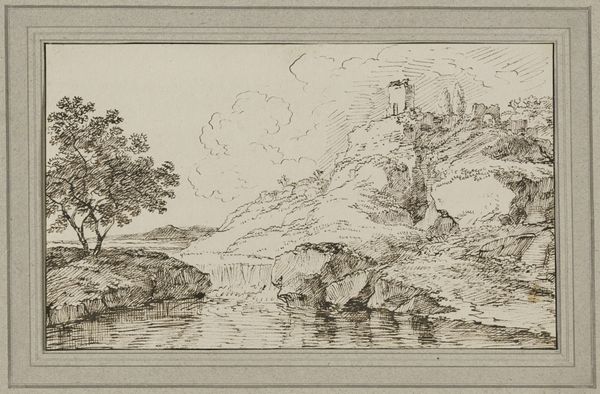
A Hilly Landscape with Figures Near a Ravine 1595
0:00
0:00
drawing, print, paper, ink, chalk
#
drawing
#
narrative-art
# print
#
landscape
#
figuration
#
paper
#
ink
#
coloured pencil
#
chalk
#
genre-painting
#
northern-renaissance
Dimensions: 113 × 189 mm
Copyright: Public Domain
Editor: This is Jan Brueghel the Elder’s “A Hilly Landscape with Figures Near a Ravine,” created in 1595 using ink, chalk, and colored pencil on paper. The sepia tones give it a somewhat melancholic feel, despite the implied activity of figures walking along the ridge. What historical context informs how we should view this landscape drawing? Curator: It's fascinating to consider Brueghel's landscape within the context of late 16th-century Europe. While seemingly pastoral, these landscapes often functioned within very specific social and political power dynamics. What’s immediately striking is its accessibility. Drawings and prints made art available to the middle class for the first time. Editor: So, how did landscapes become politically charged images, specifically? Curator: Well, think about the role of the Netherlands at the time. Brueghel's meticulously detailed landscapes, easily reproduced, allowed people in different strata of society to express collective or individual ownership of this vision of their land. Landscapes often represented ideas of nationhood but equally depicted an individual’s place within society. Who was allowed access to these images was critical. Do you think that Brueghel was trying to promote new modes of spectatorship through distribution, or perhaps reflect those changes happening already in the public sphere? Editor: I’m wondering if the very act of distributing the drawing via print democratized the access to artistic representation and ownership in that sense? Curator: Precisely. The dissemination through print directly influenced not only who could view this image but also shaped the understanding of the landscape as both an aesthetic and symbolic representation of community. What has your viewing of the work taught you? Editor: I will keep this context in mind from now on; to think about who got access to the art is as important as the art itself. Curator: Indeed. The democratization of the visual field, then, shapes and transforms our reading of it to this very day.
Comments
No comments
Be the first to comment and join the conversation on the ultimate creative platform.
